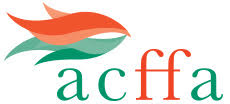The end of 2013 marked a positive milestone for New Brunswick salmon farmers.
December 31, 2013 was the conclusion of New Brunswick’s first full year using an integrated approach to sea lice management.
And you know what? After struggling through a few challenging years of high sea lice populations, our farmers are beginning to turn the corner in the management of these naturally occurring parasites. The progress is thanks to the full implementation of a collaborative and integrated pest management plan
Sea lice are found on a variety of fish stocks around the world, but their populations vary from area to area. Sea lice do not pose a human health risk, but high levels of sea lice can harm our fish. Managing sea lice is complex; farmers must deal with a wide range of biological and environmental factors including the various life stages of the lice and varying water temperatures. Relying on one method to control sea lice simply does not work.
For the past several years, our farmers have worked collaboratively with provincial and federal regulators, veterinarians, scientists, conservationists and traditional fishers to develop an Integrated Pest Management Plan (IPMP) that combines preventative farming practises like fish husbandry, single year class stocking, fallowing and low stocking densities with having a variety of approved treatment products for use when necessary. This approach allows farmers to focus on the prevention of sea lice and when necessary, to strategically use the right treatment at the right time, thus reducing the overall amount of approved product used.
After an evaluation, the results are in: with the exception of a brief spike during the last few weeks of October when water temperatures remained unseasonably warm, sea lice populations were kept lower than in the past four years. Farmers achieved that result because, for the first time, they had ongoing access to several treatment options that they could use strategically. They were able to keep treatments to a minimum. On average, farms required treatment only once, and some of our farms did not require treatment at all.
In addition, farmers used environmentally-benign hydrogen peroxide in well boats for the majority of treatments in 2013, but also tested a new delivery system for bath treatments in full tarps that supports better mixing and improved treatment efficacy.
Our farmers are committed to sharing information about their sea lice management practises as well as research and sea lice monitoring results. As part of our integrated approach, salmon farmers develop a collaborative and coordinated industry-wide sea lice management and treatment plan that is submitted to the New Brunswick Department of Agriculture, Aquaculture and Fisheries annually; we shared it with community stakeholders too. Individual companies also submit their plans to regulators. Industry sends weekly notices of any bath treatments to community stakeholders and regulators. When veterinarians decide a treatment is necessary, reports are sent to regulators detailing each cage treated. Third party audits are also part of our framework.
Farmers also submit monthly sea lice counts to Fish-iTrends, an Atlantic-wide industry data collection system developed and maintained by the Atlantic Veterinary College (AVC) at the University of Prince Edward Island. Provincial fish health personnel have ongoing access to this data. For the past three years, our association has released an annual sea lice management report which is posted on the ACFFA website using trend data from this system.
While we’re pleased our integrated approach is netting positive results, our farmers continually strive to improve their performance. Our industry has invested millions of dollars into collaborative research to develop alternative “green” sea lice technologies like improved treatment delivery systems, well boats, closed tarps, sea lice traps and “cleaner” fish. Each fall, ACFFA hosts a collaborative research workshop that brings together researchers, scientists, farmers, federal and provincial representatives and community members. Participants hear from experts on new research, management techniques and they discuss research priorities. The proceedings from these workshops are also published on our website.
Despite the good results in 2013, our farmers know that for this approach to be truly successful in the long-term, they need access to more treatment options like their counterparts in Norway, Chile and Scotland have had for many years. Those farmers have a variety of tools to control sea lice under a variety of environmental and biological conditions ensuring sea lice never pose a risk to the health of their fish and the viability of their farms. They also have access to matching research dollars to support the development of new technologies.
That said, even though it doesn’t feel like winter will ever leave us, our farmers are looking forward to spring with a renewed optimism that comes from knowing they’ve got a solid plan for moving forward with existing treatments and trials on new innovations.
Pamela Parker is the Executive Director of the Atlantic Canada Fish Farmers Association, an industry-funded organization that works on behalf of the salmon farming industry in New Brunswick and Nova Scotia.
